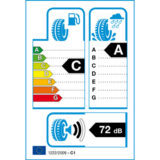ACEA: Euro VII could be basis for discussion on global heavy-duty emissions standard
Over the last few years, emissions have been a major focus of European regulators for heavy-duty (HD) vehicles. Euro VI limits for heavy-duty vehicles, introduced in Regulation 595/2009 and amended by Regulations 582/2011 and 133/2014, is the sixth iteration of the European Union directive to reduce harmful pollutants from HD vehicle exhausts. The Euro VI emission limits went into effect in 2013 for new type approvals and in 2014 for all registrations. Paul Greening, emissions and fuels director of the European Automobile Manufacturers Association (ACEA), says a focus on laboratory and on-road emissions control has yielded impressive results in reducing nitrogen oxides (Nox) and particulate matter emissions in a wide range of heavy-duty vehicles. But what happens after Euro VI?
Speaking at the UNITI Mineral Oil Technology Congress on April 17, Greening highlighted several important regulatory challenges set to impact the automotive landscape over the next few years. “We (ACEA) believe there will be a Euro VII,” confirmed Greening. Discussions have already started in Brussels, with the European Commission considering what Euro VII will look like. Despite this assertion, and an evident European policy focus on road transport, Greening believes Europe should “wait and see” what existing regulations deliver on air quality improvements first. Euro VII must be justified by environmental need, he says.
Nevertheless, the European Commission has turned its eye to HD vehicles. Greening, on behalf of ACEA, proposes that Euro VII discussions should form the basis for a strategy on a global heavy-duty emissions standard. “We would welcome CO2 and emissions targets that are aligned,” he says, to aid common development programs.
Europe needs to look to China, the world’s largest car market and with intentions on becoming the leader in automotive regulation. China currently has China 6A, essentially equivalent to Euro 6/VI and based on the Worldwide Harmonised Light Vehicle Test Procedure (WLTP). An updated 6B specification will arrive in 2023; With it comes a substantial reduction in NOx – down to 35 mg – and testing on real driving emissions with a higher conformity factor than in Europe. HD will also have the standards; 6A applies from 2021, 6B in 2023 will add additional requirements on the way vehicles speak ‘off board’ including remote diagnostics and enhanced enforcement tools for Chinese authorities.
China has already indicated it will talk about China 7 in the timeframe of 2025.












